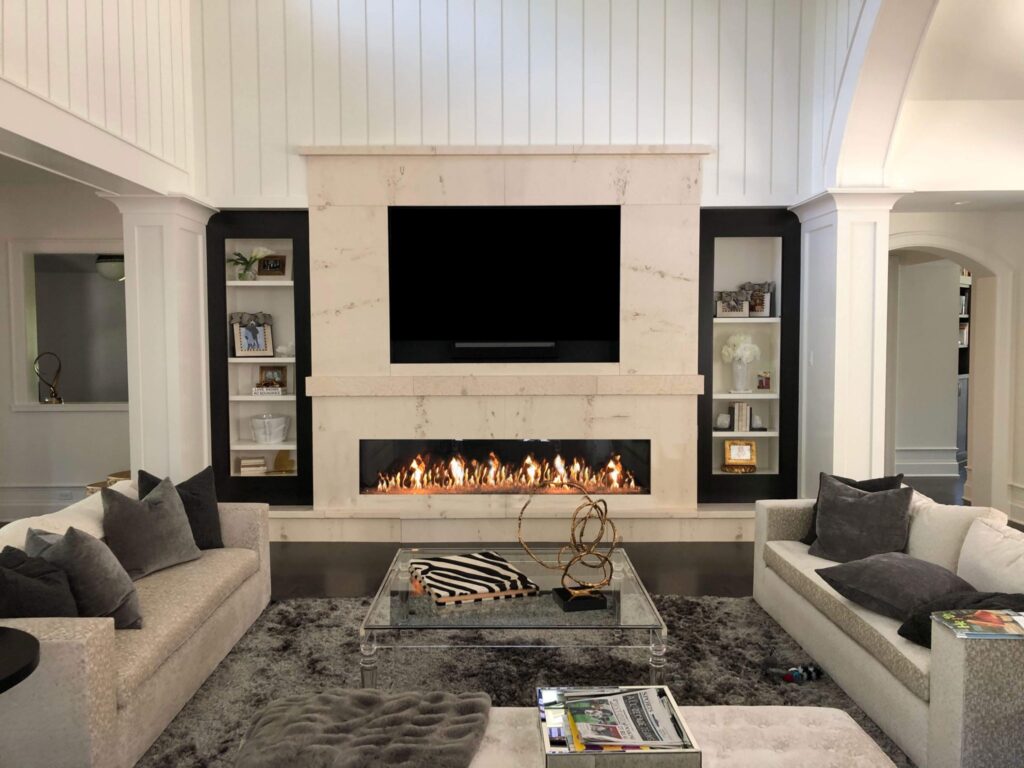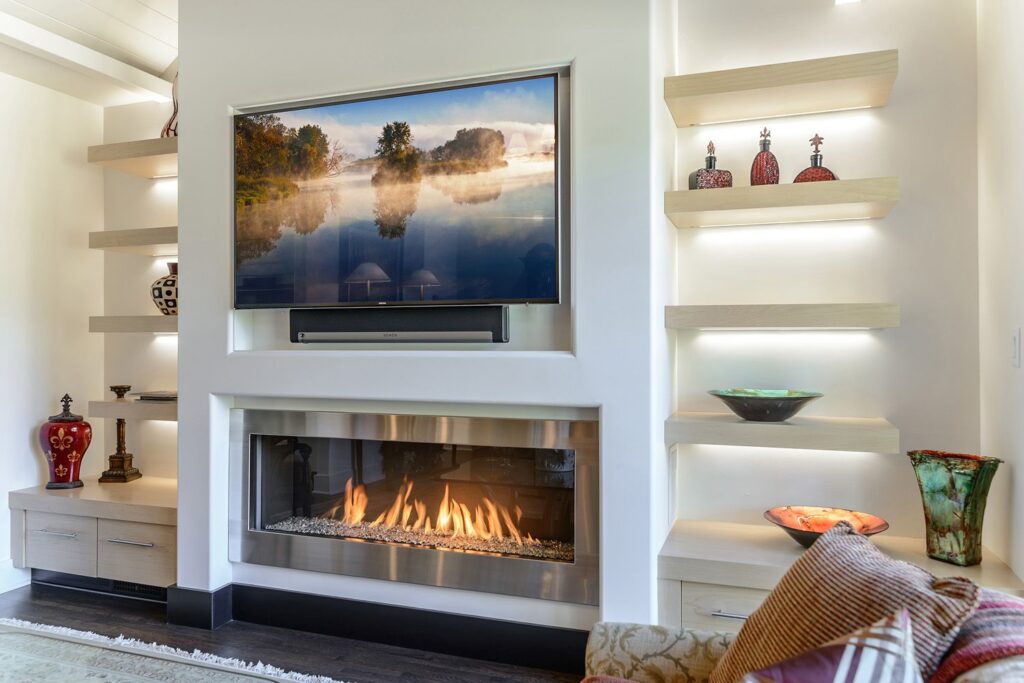As West Michigan’s trusted HVAC experts since 1971, Fullmer & Sons Heating, Cooling & Fireplaces has witnessed a revolution in home comfort technology. If your heating and cooling system is older than *8 years, you’re likely overspending by *hundreds of dollars annually while enduring uneven temperatures and frequent repairs. Modern systems like our EnergySaver Heat Pumps and SmartZone Air Conditioners aren’t just incremental upgrades—they’re quantum leaps in efficiency, comfort, and control. Let’s explore why updating your HVAC system isn’t just advisable but essential.
The High Cost of Outdated HVAC Systems
1. Energy Inefficiency: A Silent Budget Killer
HVAC units manufactured before 2017 operate at *SEER (Seasonal Energy Efficiency Ratio) ratings of 13 or lower. Compare this to our current *UltraComfort Hybrid systems with SEER ratings up to 26, and the math becomes stark:
- A 3-ton AC unit at SEER 13 costs ~$700/year to cool a 2,000 sq. ft. home.
- The same home with a SEER 26 system spends just ~$350 annually—a 50% savings.
Older systems also lack inverter compressor technology, causing them to:
- Run at 100% capacity until thermostat setpoints are reached
- Cycle on/off 5–8 times per hour
- Waste 18–25% of energy through frequent startups.
2. Refrigerant Phaseouts: The R-22 Crisis
If your system uses R-22 refrigerant (common in pre-2015 units), you’re facing:
- $90–$150 per pound recharge costs (vs. $50 for modern R-410A)
- Federal bans on production/import since 2020
- Emergency repair delays during heatwaves or cold snaps
Our SmartZone Air Conditioners use eco-friendly R-454B refrigerant, which:
- Reduces global warming potential by 78% vs. R-410A
- Maintains stable performance down to -5°F
- Qualifies for ENERGY STAR rebates.
Fullmer & Sons’ Efficiency-First Solutions
1. EnergySaver Heat Pumps: Year-Round Efficiency
Featured in our Big Rapids showroom, this dual-fuel system pairs an electric heat pump with a gas furnace for optimal performance:
- 17.2 SEER Cooling / 9.6 HSPF Heating: 35% more efficient than 2010s-era models.
- Hybrid Intelligence: Automatically switches between electric and gas based on outdoor temps to minimize costs.
- Variable-Speed Operation: Adjusts output in 1% increments to maintain ±0.5°F of setpoint.
Case Study: A Lake County homeowner replaced a 2013 heat pump with an EnergySaver model, reducing their annual energy bills from $2,100 to $1,400 despite Michigan’s volatile climate.
2. UltraComfort Hybrid Systems: The Peak of Innovation
Our flagship HVAC solution integrates three groundbreaking technologies:
- *Inverter-Driven Compressor: Runs continuously at 25–80% capacity instead of cycling, cutting energy use by *40%.
- SmartZone Airflow Management: Uses room-specific sensors to direct heating/cooling where needed most.
- Solar-Ready Design: Pre-wired for solar panel integration, potentially eliminating grid dependence.
With a 26 SEER rating and *12.5 HSPF, the UltraComfort system pays for itself in *5–7 years through energy savings alone.
3. SmartThermo WiFi HVAC Controls
Pair any new system with our SmartThermo Pro thermostat for:
- Geofencing: System idles when no phones are detected at home.
- Leak Detection: Alerts you to refrigerant or condensate issues before they escalate.
- *Utility Rate Tracking: Shifts cooling to off-peak hours, saving an additional *8–12%.
The Upgrade Process: Simpler Than You Think
Step 1: Comprehensive Home Assessment
Our technicians perform a Manual J Load Calculation to:
- Measure insulation quality via thermal imaging
- Analyze window orientations and shading
- Calculate exact BTU requirements
This prevents oversizing—a common issue that increases costs by 15–30% in older installations.
Step 2: Seamless Installation
We adhere to ACCA Quality Installation standards, ensuring:
- *Airtight Ductwork: Mastic-sealed joints eliminate *20–40% airflow loss common in older systems.
- Precision Refrigerant Charging: Uses digital scales to achieve ±0.25 oz accuracy.
- *Sound Dampening: Isolated compressor pads reduce noise by *50%.
Step 3: Ongoing Optimization
All installations include a 5-Year Premier Maintenance Plan with:
- Biannual coil cleanings
- Duct leakage testing
- SmartThermo software updates
Financial Incentives to Upgrade Now
1. Federal Tax Credits
The Inflation Reduction Act offers:
- $2,000 for qualifying heat pumps
- $600 for air conditioners meeting SEER 16+
2. Utility Rebates
Consumers Energy provides:
- $500 for replacing ACs older than 10 years
- $300 for installing programmable thermostats
3. Fullmer & Sons Financing
Our 0% APR for 60 Months option breaks costs into manageable payments while you enjoy immediate savings.
The Risks of Delay: A Cost-Benefit Analysis
| Factor | 10-Year-Old System | New Fullmer & Sons System |
|---|---|---|
| Annual Energy Cost | $2,400 | $1,550 |
| Repair Frequency | 2–3 times/year | <1 time/year |
| Temperature Variance | ±4°F | ±0.5°F |
| Lifespan Remaining | 3–5 years | 12–15 years |
Data based on 2024 Michigan Energy Office reports.
Conclusion: Don’t Let Your HVAC System Age Out
Modern HVAC technology has rendered systems from the 2010s as obsolete as flip phones. At Fullmer & Sons, we’ve streamlined the upgrade process to be hassle-free:
- Visit Our Showroom: Experience live demos of UltraComfort and EnergySaver systems.
- Schedule a Home Evaluation: Our experts will identify your ideal system size and features.
- Enjoy Peace of Mind: With 24/7 emergency support and industry-leading warranties.
Act Now: Replace your aging HVAC system before the summer heat arrives, and start saving immediately. Contact Greg at (231) 796-3403 or visit us at 20928 18 Mile Rd, Big Rapids, to begin your efficiency journey.
Because at Fullmer & Sons, we believe your comfort shouldn’t cost the earth—in energy or dollars.




